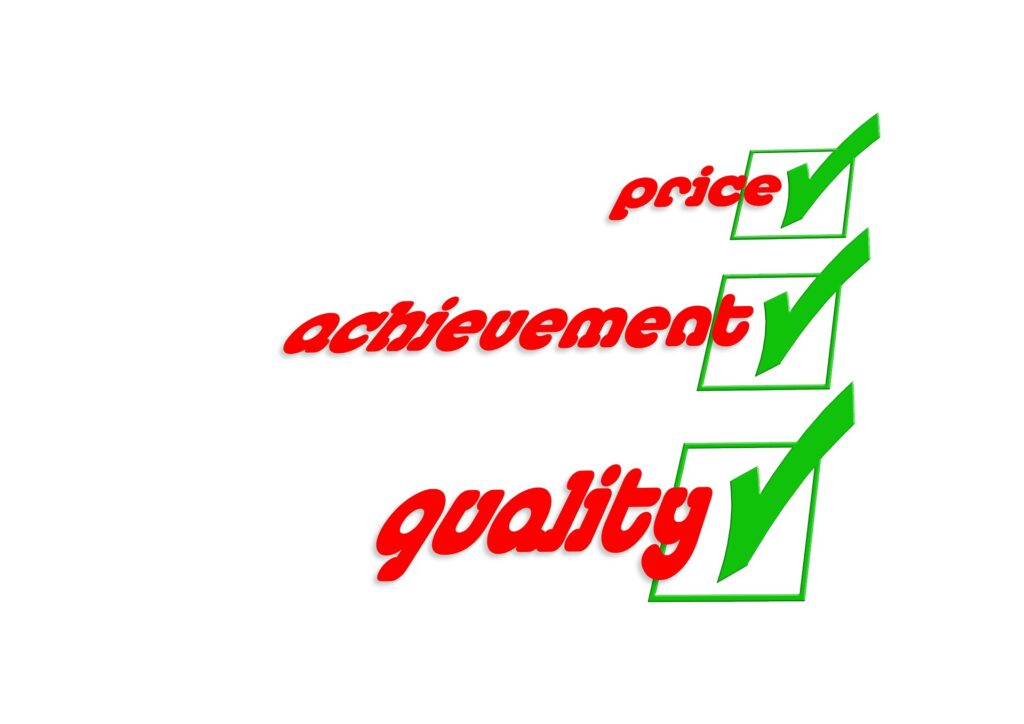
Pricing Models
Pricing Models – The popular ones You Need To Know
Pricing Models – Introduction
Welcome to our blog on pricing models! In this post, we will delve into the fascinating world of different pricing models and their implications for businesses. Pricing plays a vital role in determining profitability, market positioning, and customer perception. By understanding various pricing models, you can make informed decisions to optimize your pricing strategy. Let’s explore the most sought-after pricing models, including cost-plus pricing, value-based pricing, freemium, dynamic pricing, and subscription pricing.
Pricing Models 1. Cost-Plus Pricing
Decoding Pricing Models – Cost-Plus Pricing
Maximizing Profitability through Effective Cost Management
Introduction
Cost-plus pricing is a widely used traditional pricing model in which the price of a product or service is determined by calculating the production costs and adding a markup. While it offers simplicity and transparency, it is essential to understand the pros and cons of this model and employ effective strategies for cost management to ensure profitability. In this section, we will explore cost-plus pricing in detail, provide real-world examples and case studies, and offer actionable tips for setting an appropriate markup and managing costs.
Understanding Cost-Plus Pricing
Cost-plus pricing involves two primary components: production costs and markup. Production costs encompass direct costs (materials, labor) and indirect costs (overhead, utilities, etc.). The markup is a percentage or fixed amount added to the production costs to determine the selling price.
Pros of Cost-Plus Pricing
- Simplicity and Transparency: Cost-plus pricing offers a straightforward and easily understandable method for pricing products or services.
- Cost Recovery: This model ensures that all costs are covered, allowing businesses to achieve breakeven or generate profits.
- Cost Control: By focusing on production costs, businesses can have better control over their cost structure and identify areas for improvement.
Cons of Cost-Plus Pricing
- Ignores Market Demand: Cost-plus pricing does not take into account customer preferences or the value perceived by the market, potentially leaving money on the table.
- Competitor Pricing: Relying solely on costs might not be sufficient if competitors offer similar products at lower prices, resulting in lost market share.
- Limited Profit Potential: Since the markup is based on costs, businesses might not fully capture the value they provide to customers, leading to lower profit margins.
Case Study
Company XYZ’s Cost-Plus Pricing Success: Company XYZ, a furniture manufacturer, implemented cost-plus pricing but encountered challenges with low profitability. To address this, they adopted a proactive cost management approach. By analyzing their production processes, streamlining operations, and negotiating better supplier deals, they were able to reduce costs by 15%. Consequently, they adjusted their markup to maintain profitability while remaining competitive in the market. This case study highlights the significance of actively managing costs to enhance the effectiveness of cost-plus pricing.
Tips for Effective Cost Management
- Regular Cost Analysis: Conduct periodic assessments of your production costs, identify cost drivers, and explore opportunities for cost reduction or optimization.
- Supplier Negotiations: Collaborate with suppliers to negotiate favorable terms, discounts, or bulk purchase arrangements to lower input costs.
- Process Optimization: Streamline operations, eliminate waste, and improve efficiency to minimize production costs without compromising quality.
- Invest in Technology: Implement cost-effective technologies or automation solutions that can enhance productivity and reduce labor or operational costs.
- Continuous Improvement: Foster a culture of continuous improvement to encourage employees to contribute ideas for cost savings and efficiency gains.
Conclusion: Cost-plus pricing
Cost-plus pricing can be a valuable pricing model when complemented with effective cost management strategies. By understanding the pros and cons of this approach and actively managing costs, businesses can maintain profitability while ensuring competitiveness in the market. By analyzing real-world case studies and implementing actionable tips for cost management, you can optimize your cost-plus pricing strategy and drive business success. Remember, regularly monitor market dynamics and customer preferences to ensure that cost-plus pricing aligns with the value perceived by your target market.

Pricing Models 2. Value-Based Pricing
Unleashing Profits with Pricing Models – Value-Based Pricing
Leveraging Customer Value for Strategic Pricing
Introduction – Value-Based Pricing
Value-based pricing is a powerful strategy that sets prices based on the perceived value of a product or service to the customer. By understanding the concept of customer value, conducting market research and segmentation, and implementing value-based pricing effectively, businesses can capture the true worth of their offerings and maximize profitability. In this section, we will delve into value-based pricing, provide real-world examples and case studies, and offer actionable tips for successful implementation.
Understanding Value-Based Pricing
Value-based pricing revolves around the idea that customers are willing to pay based on the perceived value they receive from a product or service. It focuses on aligning prices with the value that customers attribute to the benefits, outcomes, and experiences associated with a product or service.
Importance of Customer Value
Customer value encompasses the benefits, advantages, and satisfaction customers derive from a product or service. Understanding customer value is crucial as it drives purchase decisions and willingness to pay. Factors influencing customer value include quality, performance, convenience, brand reputation, customer service, and emotional appeal.
Market Research and Segmentation
To implement value-based pricing effectively, businesses need to conduct thorough market research and segmentation. This involves:
- Identifying customer segments with distinct needs, preferences, and willingness to pay.
- Assessing competitors’ offerings and pricing to position your product or service appropriately.
- Conducting customer surveys, interviews, and focus groups to understand their perceptions of value.
Case Study
Company ABC’s Successful Value-Based Pricing Strategy: Company ABC, a software company, implemented value-based pricing for its cloud-based collaboration platform. Through market research, they identified two customer segments: small businesses seeking basic collaboration features and enterprise-level organizations requiring advanced security and customization. Company ABC tailored their pricing plans accordingly, offering different feature sets and pricing tiers to cater to each segment’s unique needs. This approach helped them capture a greater share of the market and increase their revenue by 25% within a year.
Implementing Value-Based Pricing
- Conduct Value Analysis: Identify the key value drivers for your customers and understand how your product or service addresses their pain points and delivers unique benefits.
- Determine Pricing Metrics: Establish pricing metrics aligned with customer value, such as performance indicators, time saved, cost reductions, or revenue increases that customers can directly attribute to your offering.
- Communicate Value Proposition: Clearly articulate the value your product or service delivers to customers through effective marketing messages, highlighting the benefits and outcomes they can expect.
- Price Segmentation: Develop pricing tiers or options that cater to different customer segments, allowing customers to choose the level of value and features that suit their needs and budgets.
- Monitor and Adjust: Continuously evaluate customer feedback, market dynamics, and competitor pricing to refine your value-based pricing strategy over time.
Conclusion: Value-based pricing
Value-based pricing empowers businesses to capture the true worth of their offerings by aligning prices with the perceived value customers derive. By understanding customer value, conducting market research and segmentation, and implementing actionable strategies, businesses can optimize their pricing and drive profitability. Real-world examples and case studies illustrate the effectiveness of value-based pricing in maximizing revenue and market share. Remember, continuously monitor customer preferences and adapt your pricing strategy to stay ahead of evolving market dynamics and changing customer needs.

Pricing Models 3. Freemium
Unlocking Growth with Pricing Models – Freemium
Leveraging the Power of Free to Drive Revenue
Introduction: Freemium
Freemium is a pricing model that has gained immense popularity in the digital era. It involves offering a basic version of a product or service for free, while premium features or enhanced functionality are available at a cost. Freemium has proven to be an effective strategy for customer acquisition, engagement, and conversion. In this section, we will explore the benefits of freemium, discuss how to determine what features to offer for free, and share actionable tips for converting free users into paying customers.
Understanding Freemium
Freemium combines the concepts of “free” and “premium.” Businesses provide a free version of their product or service to attract a large user base, and then offer additional features or advanced functionality through a paid subscription or upgrade.
Benefits of Freemium
- Customer Acquisition: Offering a free version allows businesses to reach a wider audience, lower barriers to entry, and attract a larger user base.
- Product Sampling: Freemium enables users to experience the product’s core features, fostering trust, and increasing the likelihood of conversion to the premium offering.
- Upselling and Cross-Selling Opportunities: By showcasing the value of the basic version, businesses can upsell premium features or cross-sell related products or services to users.
- Viral Marketing Potential: Satisfied free users can become brand advocates, spreading positive word-of-mouth and driving organic growth.
Determining Free Features
To determine which features to offer for free, consider the following strategies:
- Core Functionality: Provide essential features that offer value and allow users to accomplish their primary goals.
- Limitations: Place limitations or restrictions on the free version, such as limited storage, reduced functionality, or usage caps.
- Value-Added Extras: Offer bonus features or add-ons that enhance the user experience and entice users to upgrade to the premium offering.
Converting Free Users into Paying Customers
To effectively convert free users into paying customers, consider the following tips:
- Clear Value Proposition: Clearly communicate the additional value and benefits of the premium version to motivate users to upgrade.
- Time-Limited Trials: Offer time-limited trials of premium features to give users a taste of the added value and create a sense of urgency.
- Personalized Recommendations: Use data and analytics to identify user behaviors and preferences, and provide personalized recommendations for premium features that align with their needs.
- Onboarding and Education: Provide onboarding materials, tutorials, and customer support to help free users understand the value and potential of the premium offering.
- Special Offers and Discounts: Introduce special offers, discounts, or loyalty programs to incentivize free users to upgrade and reward their loyalty.
Case Study
Company XYZ’s Freemium Success: Company XYZ, a productivity software provider, implemented a freemium model for their project management tool. The free version allowed users to create a limited number of projects with basic features. However, they offered advanced project collaboration, reporting, and integration features in the premium version. Through targeted email campaigns, in-app notifications, and personalized recommendations, they successfully converted 20% of their free users into paying customers within six months.
Conclusion: Freemium
Freemium is a powerful pricing model that enables businesses to acquire a large user base, build brand loyalty, and convert free users into paying customers. By understanding the benefits of freemium, strategically determining free features, and employing conversion tactics, businesses can leverage the power of free to drive revenue growth. Real-world examples and case studies demonstrate the effectiveness of freemium in attracting and monetizing users. Remember, continuous analysis, experimentation, and optimization are key to refining your freemium strategy and maximizing the conversion rate of free users into paying customers.

Pricing Models 4. Dynamic Pricing
Mastering Profitability with Pricing Models – Dynamic Pricing
Harnessing Flexibility for Business Success
Introduction
Dynamic pricing is a strategic approach that empowers businesses to adjust prices in real-time based on market conditions, demand fluctuations, and other factors. This flexible pricing model allows companies to optimize revenue, capture value, and respond swiftly to changes in the competitive landscape. In this section, we will explore the key drivers behind dynamic pricing, delve into dynamic pricing algorithms, and provide real-world examples of companies successfully implementing this model.
Understanding Dynamic Pricing
Dynamic pricing involves adjusting prices dynamically based on various factors, such as time of day, day of the week, seasonality, inventory levels, competitor pricing, and customer behavior. This approach allows businesses to optimize revenue and profitability by capturing the maximum value from each transaction.
Key Drivers of Dynamic Pricing
- Market Demand: Dynamic pricing enables businesses to respond to changes in demand patterns, supply and demand imbalances, and customer preferences.
- Competitor Analysis: Monitoring competitor pricing and adjusting prices accordingly helps businesses maintain competitiveness and capture market share.
- Time Sensitivity: Dynamic pricing recognizes that the value customers attribute to a product or service can change over time, allowing businesses to align prices with the perceived value at any given moment.
Dynamic Pricing Algorithms
Dynamic pricing algorithms utilize advanced analytics, machine learning, and predictive modeling to optimize pricing decisions. These algorithms consider a range of factors, including historical sales data, demand forecasting, competitor pricing, customer segmentation, and market trends. By analyzing these variables, businesses can dynamically adjust prices to maximize revenue and profit.
Real-World Examples
- Airlines: Airlines employ dynamic pricing to adjust ticket prices based on factors such as seat availability, time until departure, and market demand. Prices may vary significantly depending on when and where the ticket is purchased, allowing airlines to optimize revenue.
- E-commerce Platforms: Online retailers dynamically adjust prices based on factors such as competitor pricing, customer browsing behavior, and inventory levels. Prices may change in real-time to encourage conversions, drive sales during peak periods, or maximize profit margin during low-demand periods.
- Ride-Hailing Services: Companies like Uber and Lyft use dynamic pricing to respond to fluctuations in demand and supply. During peak hours or high-demand events, prices increase to incentivize more drivers to enter the market and balance supply with demand.
Actionable Tips for Implementing Dynamic Pricing
- Data-driven Approach: Leverage data analytics to gain insights into customer behavior, market trends, and competitor pricing, allowing you to make informed pricing decisions.
- Experiment and Iterate: Continuously test and refine pricing strategies to understand how different factors impact sales, revenue, and profitability.
- Customer Segmentation: Segment customers based on their price sensitivity, preferences, and willingness to pay, and tailor pricing strategies accordingly.
- Pricing Automation: Implement pricing automation tools or software that can monitor market conditions, competitor pricing, and other variables in real-time, enabling efficient dynamic pricing adjustments.
Conclusion: Dynamic pricing
Dynamic pricing empowers businesses to adapt swiftly to market conditions, optimize revenue, and capture the true value of their offerings. By understanding the key drivers behind dynamic pricing, leveraging advanced algorithms, and drawing inspiration from successful implementations in various industries, businesses can unlock the potential of dynamic pricing to drive profitability. Remember, continuous monitoring, analysis, and experimentation are essential to fine-tune dynamic pricing strategies and achieve optimal results.

Pricing Models 5. Subscription Pricing
Maximizing Customer Value with Subscription Pricing
Harnessing the Power of Recurring Revenue Models
Introduction : Subscription pricing
Subscription pricing has emerged as a dominant revenue model across diverse industries, revolutionizing the way businesses monetize their products and services. By offering ongoing access through subscription plans, companies can enhance customer loyalty, increase revenue predictability, and provide a continuous stream of value to customers. In this section, we will delve into the advantages of subscription-based revenue models, explore different subscription pricing strategies, and provide actionable tips for creating a compelling value proposition for subscription offerings.
Advantages of Subscription-Based Revenue Models
- Revenue Predictability: Subscription pricing provides a steady and predictable revenue stream, allowing businesses to plan and forecast with greater accuracy.
- Customer Retention and Loyalty: Subscriptions foster ongoing relationships with customers, leading to higher retention rates, increased customer lifetime value, and potential upselling opportunities.
- Scalability: As the customer base grows, subscription-based businesses can scale efficiently without incurring significant additional costs.
- Customer Insights: Subscription models enable businesses to collect valuable customer data and insights, facilitating personalized marketing efforts, and enhancing customer experiences.
Different Subscription Pricing Strategies
- Tiered Pricing: Offer multiple subscription tiers with varying features, benefits, and price points to cater to different customer segments and their diverse needs.
- Usage-Based Pricing: Base pricing on the actual usage or consumption of the product or service, allowing customers to pay for what they use.
- Freemium with Upgrades: Combine the freemium model with subscription pricing by offering a basic version for free and providing premium features or enhanced functionality at a cost.
- Fixed Interval Pricing: Charge a fixed recurring fee at regular intervals (e.g., monthly, quarterly, or annually) for continued access to the product or service.
Creating a Compelling Value Proposition for Subscription Offerings
- Highlight Unique Value: Clearly communicate the unique benefits, features, or experiences that subscribers receive, emphasizing how the subscription solves their pain points or addresses their specific needs.
- Personalization and Customization: Tailor subscription offerings to individual customers, providing personalized recommendations, customization options, or exclusive content to enhance the perceived value.
- Free Trials and Limited-Time Offers: Offer free trial periods or limited-time promotional pricing to incentivize customers to experience the value of the subscription before committing to a long-term commitment.
- Exclusive Content or Access: Provide exclusive content, early access to new features, member-only events, or special perks for subscribers to differentiate the subscription offering and create a sense of exclusivity.
- Continuous Improvement: Continuously enhance the subscription offering based on customer feedback, market trends, and emerging technologies to ensure ongoing value delivery.
Case Study
Company XYZ’s Successful Subscription Pricing Strategy: Company XYZ, a streaming platform, introduced tiered subscription pricing to cater to different customer segments. They offered a basic plan with limited features at a lower price, a standard plan with additional content and features, and a premium plan with exclusive content, offline downloads, and higher video quality. This pricing strategy allowed them to capture customers with varying needs and budgets, resulting in a 35% increase in their subscriber base within a year.
Conclusion: Subscription pricing
Subscription pricing offers numerous advantages, including revenue predictability, customer loyalty, and scalability. By implementing different subscription pricing strategies, businesses can cater to diverse customer segments and their preferences. Creating a compelling value proposition through personalized experiences, exclusive content, and continuous improvement is key to driving subscription adoption and retention. Real-world examples and case studies demonstrate the effectiveness of subscription-based revenue models in various industries. Remember, understanding your target audience, analyzing market dynamics, and adapting pricing strategies accordingly are essential for successful subscription pricing implementations.
Pricing Models – Conclusion
Pricing models serve as strategic tools to drive business success and maximize profitability. By understanding the nuances of cost-plus pricing, value-based pricing, freemium, dynamic pricing, and subscription pricing, you can make informed decisions tailored to your specific industry and target market. Remember, selecting the right pricing model involves analyzing customer preferences, competitive landscapes, and market dynamics. Stay tuned for more pricing insights in our upcoming blog posts!
Shifted Market Pricing Strategy – All You Need to Know
How to Develop an ESG Strategy





